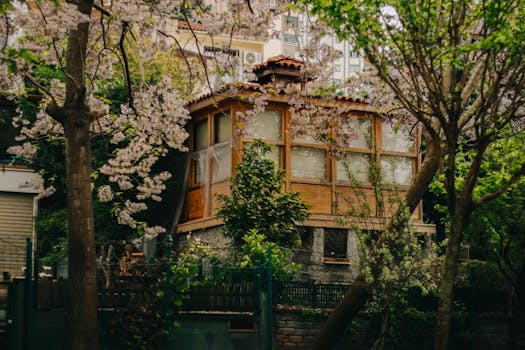
Urban Green Spaces: The Future of Outdoor Living in European Cities by 2025
Urban Green Spaces are becoming increasingly important in European cities, and it’s easy to see why. These green oases provide a tranquil escape from the hustle and bustle of city life, offering numerous benefits for both physical and mental health. As we look to the future, it’s clear that urban green spaces will play a vital role in shaping the way we live, work, and interact with our surroundings.
Introduction to Urban Green Spaces
Urban Green Spaces refer to any area of greenery within an urban environment, including parks, gardens, green roofs, and even small pockets of vegetation in between buildings. These spaces are designed to provide a range of ecosystem services, from air and water filtration to climate regulation and biodiversity conservation. In addition to their environmental benefits, urban green spaces also offer numerous social and economic advantages, making them a vital component of sustainable urban planning.
Benefits of Urban Green Spaces
So, what exactly do urban green spaces have to offer? Some of the key benefits include:
- Improved air quality: Urban green spaces help to filter out pollutants and particulate matter from the air, creating a healthier environment for city dwellers.
- Enhanced mental health: Spending time in nature has been shown to reduce stress levels, improve mood, and even alleviate symptoms of anxiety and depression.
- Increased physical activity: Urban green spaces provide opportunities for outdoor recreation, such as walking, cycling, and sports, helping to promote physical activity and reduce the risk of chronic diseases.
- Support for biodiversity: Urban green spaces can provide habitat for a range of plant and animal species, helping to support local biodiversity and ecosystem services.
- Economic benefits: Well-designed urban green spaces can increase property values, attract tourism, and support local businesses, contributing to the economic vitality of cities.
European Cities Leading the Way
Many European cities are at the forefront of urban green space design and implementation, recognizing the importance of these areas for both residents and the environment. Some notable examples include:
- Copenhagen’s carbon-neutral ambitions, which include the creation of green roofs, parks, and green spaces throughout the city.
- Barcelona’s Superblock program, which aims to reduce traffic congestion and create more green spaces for pedestrians and cyclists.
- Amsterdam’s green infrastructure, which includes a range of parks, gardens, and green roofs, helping to manage flood risk and improve air quality.
Challenges and Opportunities
While urban green spaces offer numerous benefits, there are also challenges to be addressed. Some of the key issues include:
- Limited availability of land: In densely populated cities, finding space for urban green spaces can be a significant challenge.
- Funding and maintenance: Creating and maintaining urban green spaces requires significant investment, which can be difficult to secure in times of budget constraints.
- Community engagement: Urban green spaces are most effective when they are designed and managed in collaboration with local communities, ensuring that they meet the needs and aspirations of residents.
Despite these challenges, there are also opportunities for innovation and creativity in the design and implementation of urban green spaces. Some potential solutions include:
- Green roofs and walls: Using buildings as a platform for green spaces can help to maximize limited land availability.
- Community-led initiatives: Empowering local communities to take ownership of urban green spaces can help to ensure their long-term sustainability and success.
- Technological innovations: Leveraging technologies such as green infrastructure, urban forestry, and smart city initiatives can help to optimize the design and management of urban green spaces.
Conclusion
Urban Green Spaces are a vital component of sustainable urban planning, offering a range of benefits for both people and the environment. As we look to the future, it’s clear that these spaces will play an increasingly important role in shaping the way we live, work, and interact with our surroundings. By embracing the challenges and opportunities of urban green space design and implementation, we can create healthier, more sustainable, and more resilient cities for generations to come.






